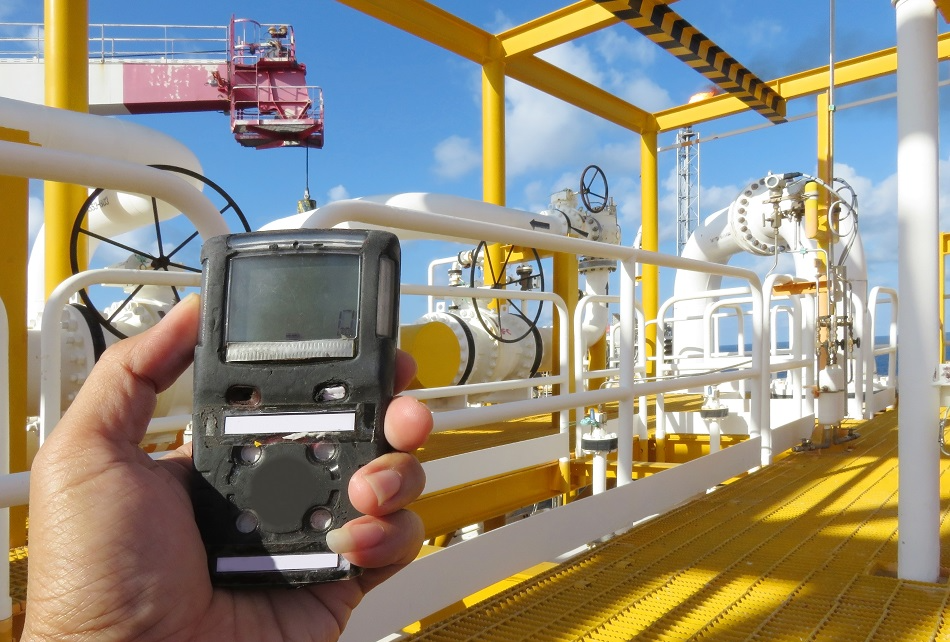When left unmonitored, several of the gases emitted in research and industry can pose significant explosion, asphyxiation, or poisoning risks. The first line of defense against these invisible threats are gas detectors, but it can be challenging to understand which type of detector to employ for a specific application.

A wide range of gas detection hardware is available on the market, from portable single-gas detectors to fixed sensor arrays that can precisely monitor huge quantities of different gases at the same time (known as multi-gas or multi-component detectors). This article outlines the benefits and features of single gas detectors and multi-gas detectors.
The Importance of Gas Detection
Gas hazards can be generally categorized as either toxic, combustible, or asphyxiating (where the body is deprived of oxygen). Researching the possible gas hazards in a specific application is an integral part of ensuring the safety of personnel in wastewater treatment plants, petrochemical processing facilities, and a range of additional industries.
After specific gas hazards have been determined in a particular environment and all potential measures have been put in place to reduce the risk of dangerous gas accumulation or gas leaks, companies must remain vigilant.
Both fixed and portable gas detectors are important life-saving devices that should be correctly used in any environment that may pose a gas risk.
Gas Detector Technology
Gas detection technology is highly diverse, with a wide array of generic and specialized detectors available to adapt to almost any application.1
Devices broadly fit one of two form factors: fixed or portable. Portable gas detectors tend to be small enough to be attached to a lanyard or belt, or can be worn on clothing.
As they are portable, they consistently monitor one or more target gases and notify the user when gas concentrations are above a predefined level through a vibration, audible alarm, and/or flashing lights.
Fixed gas monitors are installed in locations that pose a high risk and often deliver greater accuracy, along with data logging and gas concentration measurement features.
Single Gas vs Multi-Gas Detectors
Both fixed and portable multi-gas or single gas detectors are on the market. The choice between these options depends on the given application.
As the majority of environments pose the risk of multiple gas hazards, careful consideration is required when deciding between single and multi-gas detectors. Restricted spaces must be investigated for oxygen enrichment or deficiency, the presence of two or three specific toxic gases, and combustible gases.
Most organizations that have the primary goal of monitoring a single gas also decide to supplement this by detecting combustible gases such as O2 and CO.3 Monitoring these three gases in combination with H2S is particularly widespread in the oil and gas industry.
Multi-gas detectors are becoming more versatile and affordable. Some portable gas detectors measure as many as seven distinct gas components at the same time.
Calibrating Multi-Gas Detectors
Gas detectors alone cannot be lifesaving if they are not correctly used and maintained. Almost all gas detectors are vulnerable to “drift”, which is a loss of accuracy as a result of age and environmental influence.
To ensure they are working correctly, all non-disposable gas detectors must be frequently calibrated. Multi-gas detectors include several sensors for a range of gases that each require calibration, which can make the process especially time-consuming.
Utilising a multi-component calibration gas mixture can significantly reduce the time and effort needed to calibrate a multi-gas sensor. Calibrating a four- or five-gas detector can be made no more time consuming than with a single gas detector by using a multi-component reference gas mixture.
Air Products can supply calibration gases for all major gas combinations for customers requiring the calibration of multi-gas detectors. Its range of calibration gases is provided in a selection of canister sizes and concentrations, down to parts-per-billion levels.
Get in touch with Air Products today for help in selecting a gas mixture for a multi-gas detector and the team will be happy to offer advice.
References and Further Reading
- Xiong, L. & Compton, R. G. Amperometric Gas detection: A Review. Int. J. Electrochem. Sci 9, (2014).
- Fixed or Portable Gas Detection? Available at: https://www.internationalgasdetectors.com/fixed-vs-portable-gas-detectors/. (Accessed: 24th June 2020)
- Four Gas Monitor — gas detection for complex environments. Available at: https://www.blacklinesafety.com/blog/four-gas-monitor-gas-detection. (Accessed: 24th June 2020)

This information has been sourced, reviewed and adapted from materials provided by Air Products PLC.
For more information on this source, please visit Air Products PLC.